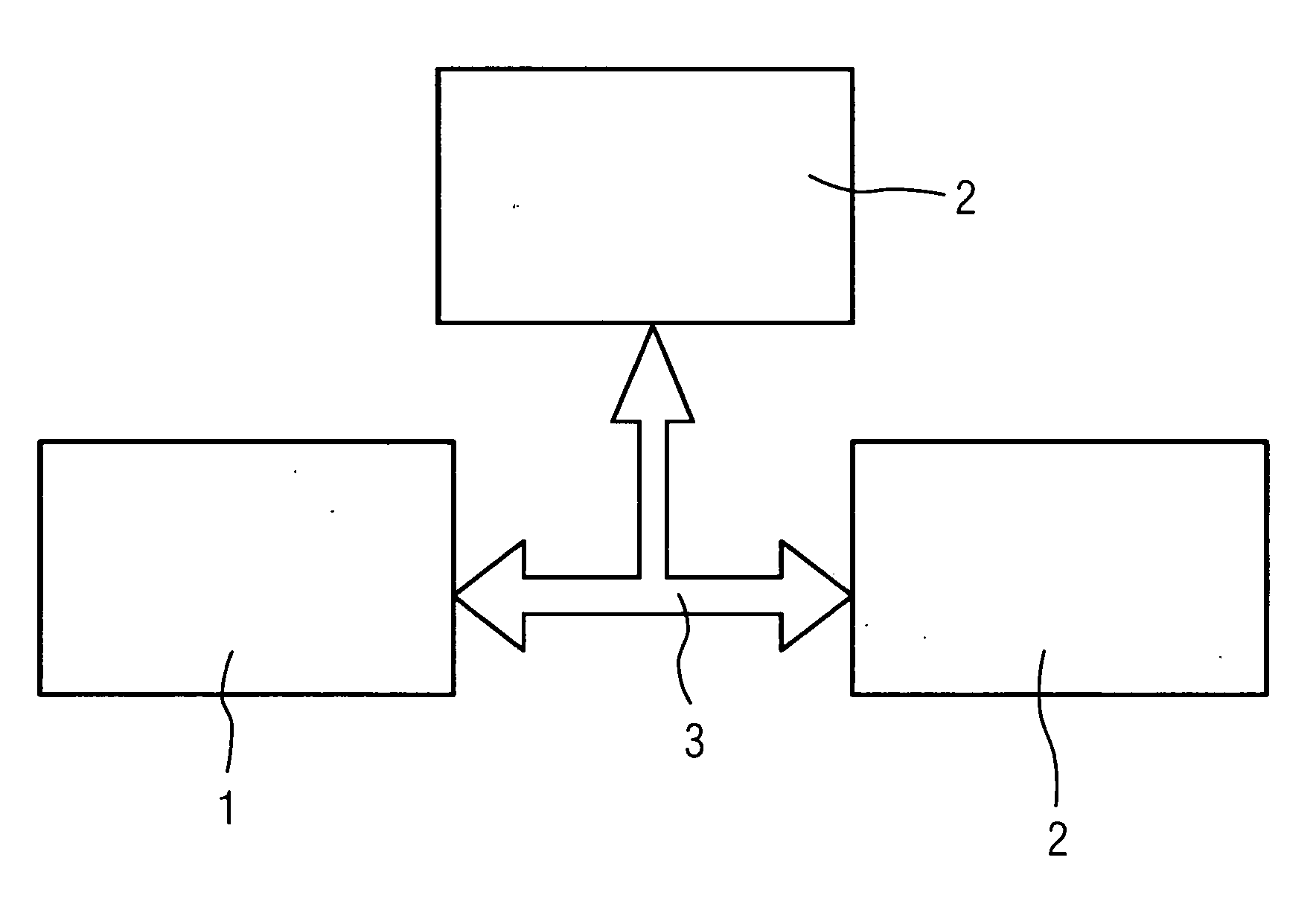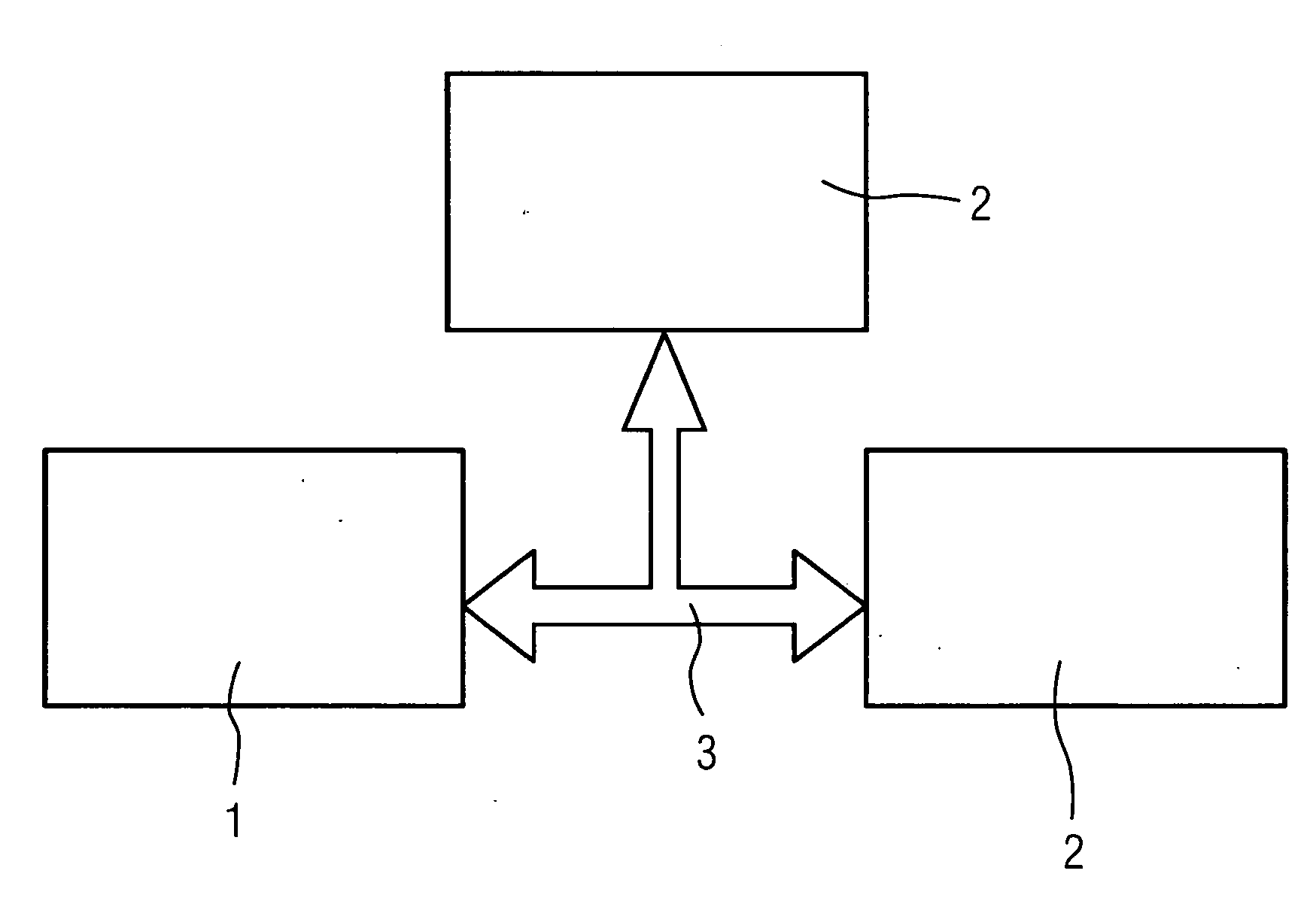Data transmission between computers
a technology of data transmission and computer, applied in the direction of digital transmission, securing communication, code conversion, etc., can solve the problems of increasing the volume of data to be transmitted, and the structure of information to be transmitted becoming ever more complex, so as to achieve the effect of delivering data more efficiently
- Summary
- Abstract
- Description
- Claims
- Application Information
AI Technical Summary
Benefits of technology
Problems solved by technology
Method used
Image
Examples
Embodiment Construction
[0020]FIG. 1 shows a system in which transceiver devices 1,2 exchange data with each other via a data transmission device 3. The transceiver devices 1,2 can be any given computers. Equally however, in addition or as an alternative, an automation component, for example in an automation system for an industrial production process, can be represented by a corresponding transceiver devices 1,2. In this case the number of transceiver devices 1,2 involved is not limited to the examples shown in FIG. 1. Instead further transceiver devices 1,2 can participate in the data transmission. Detailed structure information is transmitted between the transceiver devices in a first phase of establishing the data transmission. This is information about the actual structure of the data subsequently to be transmitted. At the beginning of the data transmission the detailed structure information is transmitted and the data is reconciled between the transceiver devices 1,2 involved. If the structure defini...
PUM
 Login to View More
Login to View More Abstract
Description
Claims
Application Information
 Login to View More
Login to View More - R&D
- Intellectual Property
- Life Sciences
- Materials
- Tech Scout
- Unparalleled Data Quality
- Higher Quality Content
- 60% Fewer Hallucinations
Browse by: Latest US Patents, China's latest patents, Technical Efficacy Thesaurus, Application Domain, Technology Topic, Popular Technical Reports.
© 2025 PatSnap. All rights reserved.Legal|Privacy policy|Modern Slavery Act Transparency Statement|Sitemap|About US| Contact US: help@patsnap.com


